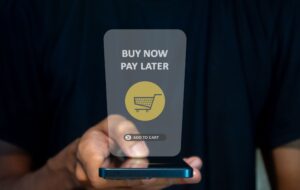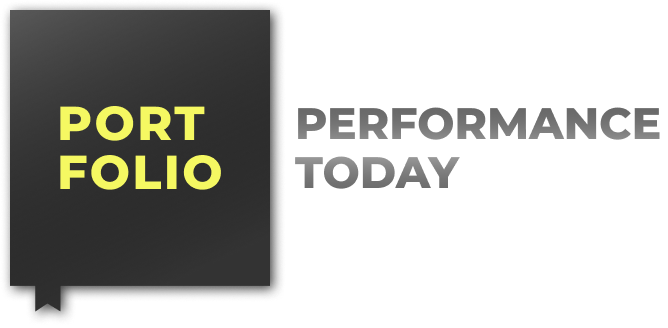
In 2023, Americans used Buy Now, Pay Later (BNPL) services to finance over $100 billion in US retail transactions, up nearly fivefold since 2020. This surge has alarmed personal finance professionals and media commentators. Their concerns fall into two related categories. First, overall levels of consumer debt are rising. Second, the way these loans are designed and advertised — buy now, pay later — encourages consumers to take on more debt, increasing the risk of overextension.
“Buy now, pay later programs are a scam,” Douglas Boneparth, a certified financial planner and founder of Bone Fide Wealth, said on LinkedIn. “They encourage overspending, destroy credit, saddle you in debt, and target consumers who are most susceptible to borrowing when they shouldn’t. Society would be better off without them.”
So far, Consumer Financial Protection Bureau rulemaking has focused on holding BNPL companies to the same dispute resolution and credit bureau reporting requirements as credit cards. But it’s easy to see how critics of payday loans might go after BNPL short-term credit as well.
Concerns about BNPL center on two main issues. First, these programs make it easy for consumers to justify impulsive or unaffordable purchases—buying things they don’t need at prices they can’t afford. Second, market observers see BNPL being utilized more frequently as a sign of broader economic stress. In this case, people living paycheck to paycheck may be using BNPL programs to afford basic goods.
Regulators and financial professionals worry that BNPL fuels rising consumer debt, burdening the already financially struggling and pilfering from the savings accounts of hard-working individuals, does so largely unnoticed by government or markets.
Despite these concerns, BNPL is a rapidly growing alternative to traditional credit, offering consumers the ability to split purchases into smaller, manageable installments, often with zero interest if paid off in the short term.
So how does it work?
In the checkout window online, a consumer may elect to utilize a BNPL service like Klarna or Affirm. The BNPL provider and that specific business have entered into a contractual relationship, with the lender charging a fee (typically 2 to 8 percent) to advance the full sum of the consumer’s payment to the business, taking on the responsibility of repayment itself.
BNPL providers earn income from business fees, interest charged on longer term products, such as six or 12 month offerings, late fees, and occasionally a percentage of the total payment financed. Those business fees tend to be larger than those charged by traditional credit card companies, sometimes double. Repayments usually cannot be made with a credit card. Short-term plans, such as four installments or 30-day terms, tend to be entirely free of interest if repaid within the agreed upon window.
If this sounds familiar, good. It should.
BNPL services operate nearly identically to traditional credit cards. The only material difference is the expressed flexibility BNPL offers consumers. Where a traditional credit card offers interest-free financing of purchases over the course of a single billing cycle, BNPL offers this same service over a potentially longer period of time (two months in Klarna’s ‘pay in four’ plan).
Consumers choose BNPL services for much the same reason they use credit cards — ease of transacting, quick access to credit and loans, and membership perks. But BNPL can offer more. The APR charged by BNPL services for longer-term repayment plans is cheaper than the average APR charged by credit cards for carrying a balance — 19.99 percent for Klarna, 24.33 percent for credit cards, saving consumers nearly five percent. BNPL also gives consumers more control over timing their purchases. A consumer who needs to make a $300 purchase immediately at the end of their credit-card billing cycle might face full repayment in just a week or two. Using BNPL instead allows them spread the payment out interest-free, like resetting the clock on their billing cycle. It’s a flexible way to manage spending without incurring additional costs.
Here’s the rub — BNPL is credit, not a paycheck advance. They aren’t debt, in the traditional sense, they’re credit. And consumers who use the service agree: 53 percent of users choose the BNPL service for convenience and 23 percent use it to avoid incurring credit card debt. Consumers in general still prefer store credit offerings, but younger shoppers are driving BNPL growth: 59 percent of Gen Z say they prefer it.
That survey reveals a simple, reassuring fact: BNPL is viewed by consumers to be an alternative to store credit offerings. They choose between financing through banks, stores, or BNPL firms, and approach each with similar caution. Late payment data supports this: while 41 percent of adults report being charged a late fee for a BNPL purchase over the past year, this rate is roughly the same for credit card users — 37 percent.
If swiping a credit card for groceries is considered normal, choosing BNPL shouldn’t raise any eyebrows — especially when it offers clearer terms and more inclusive access. People don’t use BNPL because they’re broke, they use it because it makes sense to do so. It’s not a sign of economic distress, but of evolving consumer choice. Just as credit cards became a staple of everyday transactions despite initial skepticism, BNPL gives people more flexible and transparent ways to manage their money. For many, it provides short-term liquidity without revolving debt or hidden fees. If no one questions the middle-class shopper swiping a credit card for essentials, why rush to judge someone using BNPL for the same purpose?
Financial tools should empower, not penalize, everyday consumers. Consumers are telling us BNPL deserves a fair shot.
